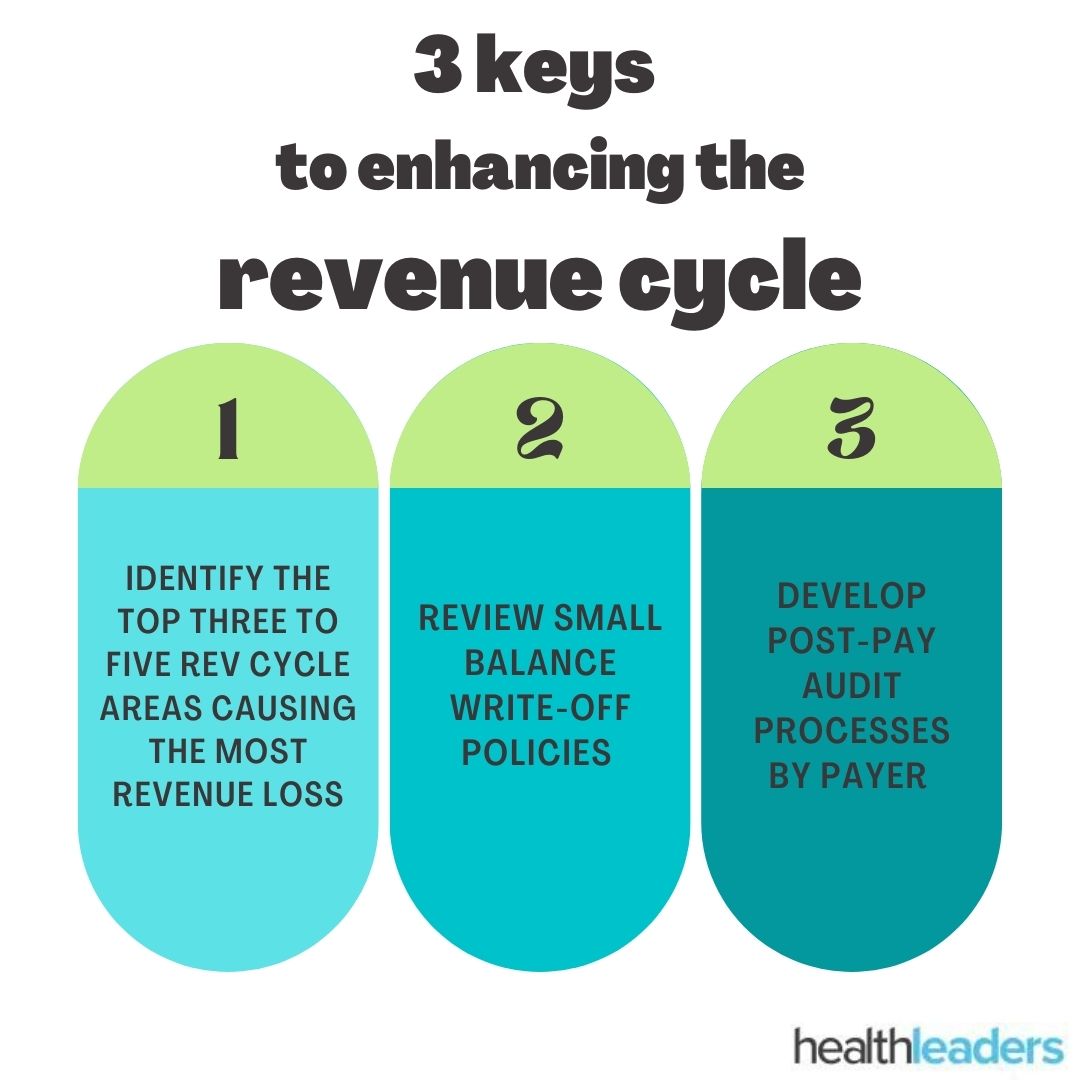As more claims roll in and staffing needs deepen, revenue cycle leaders should work on solutions to make up for potential lost revenue.
Patient volumes and subsequent claims will only continue to increase. In fact, medical claims are now on the rise after being suppressed during the early stages of the COVID-19 pandemic.
On top of this, there is mounting pressure on hospital margins. Between June and July of this year, hospitals' financial performance plunged, according to the latest National Hospital Flash Report from Kaufman Hall.
As healthcare organizations look to strengthen the bottom line coming out of the pandemic, it will be increasingly important for leaders to address revenue cycle management gaps—and do so while balancing the lack of staffing.
Belinda Cridge, revenue cycle management expert at HGS Healthcare, spoke with Healthleaders to discuss what revenue cycle leaders can do to alleviate these issues as pressure intensifies.
Increasing revenue and closing gaps
"With inflation at a 40-year high everyone has less buying power, which will likely result in a larger volume of self-pay, accounts-receivable balances." Cridge says.
This is why it's important for revenue cycle leaders to develop processes to collect payments pre-service and provide patients with better good-faith estimates.
"Another area of revenue loss is typically retro-eligibility and coordination of benefits. Developing exception reports, retro-eligibility reports, and paid-claim databases are some of the best ways to avoid black holes as it relates to this area of loss," Cridge said.
Pinpointing the area within your revenue cycle with the most gaps is also very important.
Within revenue cycle management, clinical denials for medical necessity and level of care downgrades are costly. Post-pay audits were temporarily put on hold during COVID-19, and now organizations are seeing a huge rise in these audits, Cridge says.
"Data science and analytics can help providers track root causes of unpaid claims and avoid these going forward," Cridge says. "Payer rules are cumbersome and some providers, by matter of routine process, provide certain levels of service irrespective of the payer."
While creating a plan of action for revenue cycle leaders is a great start, it can seem like an uphill battle as revenue cycle staffing shortages take hold.
According to a recent survey, more than 57% of health systems have more than 100 open roles to fill, with one in four finance leaders needing to hire more than 20-plus employees to fully staff their revenue cycle departments.
Since staffing and revenue cycle talent shortages will continue in the near-term and exacerbate the pressure on cost reduction, Cridge says she recommends three steps to immediately enhance the revenue cycle to help increase the bottom line and ease staffing deficiencies.
One: Invest in a consultative review of accounts receivable to identify the top three to five areas causing the most revenue bleed and develop plans and timelines to fix them.
For example, billing processes—from bill creation through payer acceptance—can greatly benefit from being fully automated, Cridge says.
"Automating these processes are typically inexpensive and can have an immediate impact on revenue," she said.

Two: Review your small balance write-off policies.
"It's easier to get small balance claims paid if there's a vendor partner who has robust services and the depth of experience to monitor and work through these efficiently," Cridge said.
Three: Develop post-pay audit processes by payer.
Significant dollars are lost due to upfront tasks not being done to avoid recoupments, Cridge said.
Cridge has put her own tips to work as she recently helped to leverage data analytics to identify trends in denials/underpayments for an organization.
The initial findings showed that, over a period of two years, one payer underpaid $120K in oncology payments, while another payer did not pay a single appeal, she said. Cridge also found that there were 14,000 unnecessary follow-up attempts on claims that were being processed to pay.
"Revenue cycle leaders should invest in a data center, a data scientist, and revenue cycle subject matter expert to help make up lost revenue. The initial set-up may be overwhelming, but the ongoing control will reduce the need for manual trending, alleviate staffing issues, and avoid revenue loss," she says.
“Revenue cycle leaders should invest in a data center, a data scientist, and revenue cycle subject matter expert to help make up lost revenue. The initial set-up may be overwhelming, but the ongoing control will reduce the need for manual trending, alleviate staffing issues, and avoid revenue loss.”
Amanda Norris is the Director of Content for HealthLeaders.
